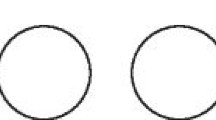Abstract
Data sources A comprehensive collection of databases were searched from inception to August 2020, such as Cochrane, MEDLINE, Scopus and Web of science. Also, references and citations of retrieved records, conference proceedings and leading journals were searched.
Study selection All randomised clinical trials on root-canal-treated adult permanent teeth that compared the outcomes of ultrasonically activated irrigation (UAI) to syringe irrigation (SI) were eligible. The outcomes considered were post-operative pain, pain intensity, periapical healing after 12 months, the incidence of microbial presence, microbial quantification, lipopolysaccharides (LPS) quantification and lipoteichoic acid quantification. Studies with insufficient data for risk of bias assessment or other outcomes were excluded.
Data extraction and synthesis The two independent reviewers did the screening process in title, abstract and full-text assessment steps. Also, the data extraction process and risk of bias assessment were done by two independent reviewers. Any disagreement was resolved by consensus or the opinion of a third reviewer. Any missing information was filled in by contacting the authors. The Cochrane risk-of-bias tool for randomised trials was used to assess the risk of bias. The following domains were evaluated for risk of bias: randomisation process, deviation from the intended interventions, missing outcome data, outcome measurement and the selection of the reported results. If all domains were rated as 'low risk', judgements would be rated as 'low risk', otherwise, 'high risk'. The risk ratios and mean risk difference with 95% confidence interval (CI) were used as measure effect. The random effects model was used to combine the effects. The heterogeneity is measured by I2 test (I2 test >50% and p <0.1 considered as substantial heterogeneity). The level of certainty of evidence for clinically important outcomes was determined using the guidelines of Grading of Recommendations Assessment, Development and Evaluation working group.
Results Four studies entered the meta-analysis stage based on pain outcomes. The overall risk of bias for three of them was assessed as high. All of them had examined pain incidence before 24 hours but only two studies have examined the occurrence of pain in the period of 24-72 hours and after 72 hours to 7 days. Considerable heterogeny was among the incidence of pain <24 hours between studies (I2= 83%). Therefore, the incidence of pain in two sub-groups of vital and non-vital pulp has been investigated. In the non-vital pulps, the incidence of pain by UAI was half of the incidence of SI pain (relative risk= 0.50; 95% CI 0.35-0.71; I2 = 0%; 308 teeth). But no significant difference was seen in vital pulps. Also, there was no significant difference in the occurrence of pain after 72 hours between the two methods. Two studies assessed the intensity of pain in three periods: <24 hours, 72-24 hours, more than 72 hours and less than 7 days. The combined results based on vital and non-vital groups resulted in no significant difference in any period. Pooled data of pain outcomes were assessed with very low or low confidence of evidence.
Five studies with microbiology-related outcomes entered the final analysis stage. The overall risk of bias for two of them was high. Three studies evaluated the effect of the irrigation method on microbial presence as an outcome. High heterogeneity was among the results of the studies (I2= 72%). However, with and without subgroup analysis, meta-analysis results showed no significant difference between these two methods. A lower microbial count was found with UAI than SI in a meta-analysis of four studies (standardised mean difference-pooled - 0.40; 95% CI [-0.78, -0.02]; I2 = 0%; 126 teeth). Two studies measured LPs. The meta-analysis showed lower values of LPS with UAI compared to SI (34, 37) (mean difference pooled - 0.06; 95% CI [-0.11, -0.01]; 61 root canals; I2 = 29%). One study measured lipoteichoic acid and found no significant difference between the irrigation methods.
Three studies with treatment-success-related outcomes entered the meta-analysis stage with an overall high risk of bias. Two studies' pooled data revealed no significant difference between the irrigation methods regarding treatment failure. One study assessed periapical-lesion volume after treatment and found no significant difference between the irrigation methods.
Conclusions According to limited data, UAI may reduce the risk of post-operative pain during the first 24 hours and reduce microbial counts, particularly cultivable germs in cases of apical periodontitis. However, most meta-analyses are conducted on a small number of studies and have an overall 'very low' to 'low' certainty of evidence; as a result, the evidence is deemed insufficient to either support or disprove UAI efficacy when compared to SI.
This is a preview of subscription content, access via your institution
Access options
Subscribe to this journal
Receive 4 print issues and online access
$259.00 per year
only $64.75 per issue
Buy this article
- Purchase on Springer Link
- Instant access to full article PDF
Prices may be subject to local taxes which are calculated during checkout
Similar content being viewed by others
References
Barbosa A F A, de Lima C O, Sassone L M, Fares R D, Fidalgo T K D S, Silva E J N L. Effect of passive ultrasonic irrigation on hard tissue debris removal: a systematic review and meta-analysis. Braz Oral Res 2021; DOI: 10.1590/1807-3107bor-2021.vol35.0123.
Căpută P E, Retsas A, Kuijk L, Chávez de Paz L E, Boutsioukis C. Ultrasonic Irrigant Activation during Root Canal Treatment: A Systematic Review. J Endod 2019; 45: 31-44.
Susila A, Minu J. Activated Irrigation vs. Conventional non-activated Irrigation in Endodontics - A Systematic Review. Eur Endod J 2019; 4: 96-110.
Von Hippel P T. The heterogeneity statistic I(2) can be biased in small meta-analyses. BMC Med Res Methodol 2015; 15: 35.
Vickers A J, Altman D G. Statistics notes: Analysing controlled trials with baseline and follow up measurements. BMJ 2001; 323: 1123-1124.
Author information
Authors and Affiliations
Ethics declarations
The authors declare no conflicts of interest.
Rights and permissions
About this article
Cite this article
Shahravan, A., Nekouei, A. Does ultrasonic activation of irrigation during endodontic therapy improve the clinical and microbiological effects?. Evid Based Dent 23, 118–119 (2022). https://doi.org/10.1038/s41432-022-0819-9
Received:
Accepted:
Published:
Issue Date:
DOI: https://doi.org/10.1038/s41432-022-0819-9



